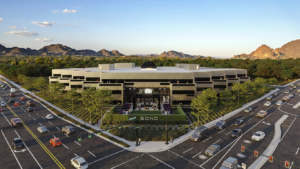The Greater Phoenix market has enjoyed a fairly unobstructed run of development in the last decade. Both state and local governments have, by and large, stayed out of the way of business and worked with developers to solve any zoning issues that arise.
But should developers expect this to continue into the 2020’s?
“There will be a heightening of community input on many entitlements as it affects development in surrounding communities,” said Larry Lazarus, partner at Lazarus & Silvyn‘s Phoenix office. “While cities and towns will want to take advantage of the economic opportunities in this cycle, there will be more pressure from the public to not affect what they perceive to be their existing lifestyle.”
“Anticipate continued schizophrenia from the legislative bodies,” added Lazarus, “on one hand promoting jobs, increasing tax dollars and paying for new much-needed infrastructure and on the other hand succumbing to pressures of existing and future anti-development factions.”
Taylor Earl, who along with his father Stephen Earl and Rodney Jarvis lead the Earl & Curley law firm, feels all of the recent development successes will prompt some to tackle even more challenging zoning issues.
“We have had several years of positive development growth here in Arizona and as those positive years continue to stack up, and as real estate forecasts remain positive, developers will gain increasing confidence regarding development opportunities,” said Taylor Earl. “We expect that confidence to lead developers to take on projects that include the extra step of zoning entitlements, including challenging entitlement prospects.”
Law firms that specialize in zoning and land use law know that new challenges for development pop up all of the time. In this current growth cycle, communities have been very receptive to zoning changes to attract new development, as long as that development fits the community vision.
“Legal issues we see in 2020 include balancing property owner rights with community needs such as sustainability and affordable housing,” said Darin Sender, founder of Sender Law. “Municipalities need to update infrastructure, implement sustainable strategies and provide affordable housing yet the burden to provide for those needs is often placed on private development. As a result, elected officials, city staff, and developers struggle to find the best path forward to achieving shared goals.”
Most Valley cities are facing similar issues: A shortage of housing developments and a desire to build up their tax base with large office, industrial and retail developments. With finished residential lots becoming more scarce, cities are promoting denser developments.
“Cities are trying to funnel hotels, office and multifamily developments into the core areas,” said James Bond, director at Fennemore Craig. “As land prices and construction costs continue to rise, developers will be looking to add additional height to their projects in order to make the projects financially viable. Some cities will feel pressure to push back on these increased heights, which will require developers to become more creative as they plan their projects.”
Developers can alleviate some of that community pressure on a project by making sure that they are getting accurate information out into the community. Anti-development factions have many more avenues to get their message out in today’s social media age. Developers can help themselves by also utilizing these avenues to provide accurate information to the community.
“As various list-serves and other modes of communications for neighborhoods have increased, one of the biggest challenges will be educating the public on new projects with facts before inaccurate hyperbole frames the discussion,” said Keri Lazarus Silvyn, partner at Lazarus & Silvyn’s Tucson office. “Elected officials, design review boards and government staff rely on the development community to ensure effective communication and appropriate framing of issues. NextDoor and similar apps do not lend themselves to people trying to understand all sides of an issue. The development community will need to anticipate inaccurate information and work to get the facts of a case into the public as part of the decision-making process.”



